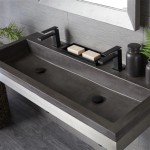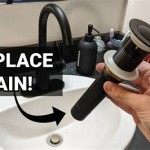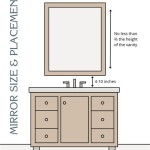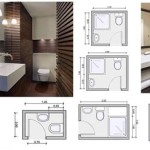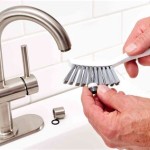How To Replace A Bathroom Exhaust Fan
Replacing a bathroom exhaust fan can significantly improve air quality, reduce moisture, and prevent mold growth in bathroom environments. This article provides a step-by-step guide on how to safely and efficiently replace an existing bathroom exhaust fan with a new unit. Before starting any electrical work, it is crucial to prioritize safety and adhere to all applicable electrical codes and regulations.
Safety Precautions and Preparation
Prior to initiating the replacement process, it is essential to gather all necessary tools and materials. This includes the new bathroom exhaust fan, a screwdriver (both Phillips head and flathead), wire strippers, wire connectors (wire nuts), electrical tape, a drill (possibly with various drill bits), a utility knife, safety glasses, work gloves, a ladder, and a voltage tester. It is also advisable to have a dust mask to protect against airborne particles during demolition.
The first and foremost safety precaution is to disconnect the power supply to the bathroom exhaust fan. Locate the circuit breaker that controls the bathroom's electrical circuit in the electrical panel. Turn the breaker to the "OFF" position. To ensure the power is completely off, use a non-contact voltage tester to verify that no electricity is flowing to the existing fan's wiring. Never proceed with the replacement if the voltage tester indicates the presence of electricity.
Once the power is confirmed to be off, protect the bathroom floor with a drop cloth or old towels to prevent damage from falling debris. Wear safety glasses to protect the eyes from dust and small particles that may dislodge during the removal process. Gather the tools and materials in the bathroom for easy access.
Removing the Existing Bathroom Exhaust Fan
The removal process varies slightly depending on the model and installation method of the existing bathroom exhaust fan. However, the general steps remain consistent.
Begin by removing the fan cover. This is typically attached with screws, clips, or a spring mechanism. If screws are present, use the appropriate screwdriver to loosen and remove them. If clips are used, gently pry them open with a flathead screwdriver or by hand. For spring-loaded covers, carefully pull down on the cover to release the springs from their slots.
With the cover removed, the fan motor and housing will be visible. Disconnect the electrical wiring to the fan motor. This typically involves loosening wire connectors (wire nuts) that connect the fan’s wires to the building’s electrical wiring. Carefully untwist the wire connectors, keeping track of which wire connects to which. The wires are typically color-coded (black, white, and green or bare copper), and it’s crucial to maintain this configuration when connecting the new fan.
Loosen any screws or fasteners that secure the fan housing to the ceiling joists or mounting brackets. Depending on the installation method, the fan housing may be directly screwed into the joists, suspended by metal straps, or attached to a mounting bracket. If the fan is attached to metal straps, carefully cut or unscrew them. If it's screwed directly to the joists, remove the screws. For fans mounted on brackets, detach the fan housing from the bracket, carefully supporting the fan to prevent it from falling.
Once the mounting is detached, carefully lower the entire fan assembly. Be prepared for dust and debris to fall. If the fan housing is caulked or sealed to the ceiling, use a utility knife to carefully cut around the edges of the housing to break the seal. A flexible putty knife can also aid in separating the housing. After removing the old fan, inspect the opening for any damage or debris. Clean the surrounding area to ensure a clean surface for the new fan installation.
Installing the New Bathroom Exhaust Fan
Before installing the new fan, thoroughly review the manufacturer's instructions. Each fan model has specific installation requirements and guidelines. Familiarizing oneself with these instructions ensures proper installation and optimal performance.
Assess the size of the opening in the ceiling. If the new fan housing is smaller than the existing opening, additional support may be needed to secure the new fan. This could involve adding wood shims or furring strips to the ceiling joists to create a snug fit. If the new fan housing is larger than the existing opening, the opening may require modification. This may involve carefully cutting the drywall or ceiling material to expand the opening to the necessary size. Exercise caution to avoid damaging electrical wiring or plumbing located within the ceiling.
Position the new fan housing within the opening and secure it to the ceiling joists or mounting brackets. Depending on the installation method, this may involve screwing the housing directly to the joists, attaching it to existing mounting brackets, or using new mounting brackets provided with the new fan. Ensure the fan housing is securely attached and level. A level fan housing will prevent noise and vibration.
Connect the electrical wiring to the new fan motor. Match the wires according to their color-coding: black to black (hot), white to white (neutral), and green or bare copper to green or bare copper (ground). Use wire connectors (wire nuts) to securely connect the wires. Twist the wires together tightly and screw on the wire connectors until they are snug. Wrap the wire connectors with electrical tape for added security and insulation. Ensure no bare wire is exposed.
Install the fan motor into the housing. Most fan motors are designed to slide or clip into the housing. Follow the manufacturer’s instructions for proper installation. Once the motor is in place, test the fan by temporarily turning the circuit breaker back on. Ensure the fan operates smoothly and quietly. If there are any unusual noises or vibrations, turn the breaker off immediately and recheck the installation.
Attach the fan cover to the housing. Align the cover with the housing and secure it using the screws, clips, or spring mechanism provided. Ensure the cover is securely attached and flush with the ceiling. Re-verify that the cover is securely fastened.
Final Steps and Testing
After installing the fan and attaching the cover, turn the circuit breaker back to the "ON" position. Test the fan to ensure it operates correctly. Listen for any unusual noises or vibrations. Check the airflow by holding a piece of tissue paper near the fan. The tissue paper should be drawn towards the fan, indicating proper airflow.
Inspect the area around the fan for any gaps or openings. Seal any gaps with caulk to prevent air leaks. This will improve the fan’s efficiency and prevent drafts. Clean up any debris and dispose of the old fan and packaging materials responsibly.
Monitor the fan's performance over the next few days. Check for any signs of moisture buildup or condensation in the bathroom. A properly functioning exhaust fan should effectively remove moisture and prevent mold growth. If any issues arise, consult the manufacturer’s instructions or contact a qualified electrician. Regular maintenance, such as cleaning the fan cover periodically, will ensure optimal performance and prolong the fan’s lifespan.

Install A New Bathroom Vent Fan Light

How To Replace A Bathroom Exhaust Fan Without Attic Access 12 Step Guide Home Inspector Secrets

How To Install Clean A Bathroom Fan

How To Install A Bathroom Fan Step By Guide Bob Vila

How To Replace Or Install An Easy Bath Fan The Home Depot

How To Replace A Bathroom Exhaust Fan Stanley Tools

How To Replace A Bathroom Exhaust Fan Without Attic Access 12 Step Guide Home Inspector Secrets

How To Replace Or Install An Easy Bath Fan The Home Depot

Pin On Handyman

How To Replace A Bathroom Exhaust Fan Stanley Tools
Related Posts

